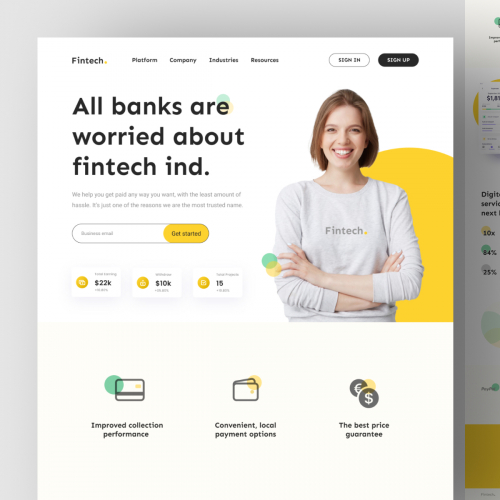Leading Tips for Developing an Impactful Website Style That Transforms
In today's electronic landscape, the importance of an impactful website design can not be overemphasized, especially when it concerns transforming visitors right into customers. To accomplish this, one have to consider a range of aspects, consisting of understanding the target audience, focusing on customer experience, and maximizing for mobile systems. The calculated use of compelling call-to-actions and a well-defined visual pecking order plays a crucial role in guiding customers through their journey. As we explore these vital aspects, it becomes evident that the success of your website depends upon greater than just aesthetic appeal; it needs a thoughtful method to style and capability.

Understand Your Target Market
Understanding your target market is basic to reliable site layout, as it lays the groundwork for creating an engaging individual experience. Determining that your individuals are, including their demographics, preferences, and behaviors, makes it possible for designers to customize the site's material, layout, and capability to meet particular demands.
Conducting thorough market study is essential in this procedure. Studies, meetings, and analytics can give useful understandings right into user assumptions and discomfort factors. By assembling this information, developers can develop user identities that stand for different segments of the target market, guaranteeing that design decisions are educated and relevant.
Furthermore, understanding the target audience assists in choosing suitable style aspects such as color pattern, typography, and imagery that reverberate with individuals. A website that talks straight to its audience fosters a sense of connection and trust fund, motivating longer brows through and higher conversion prices.
Eventually, a user-centered strategy to internet site style not just improves user satisfaction but additionally supports organization purposes by driving engagement and commitment. By prioritizing the needs and preferences of the target market, a website can efficiently serve its objective and achieve wanted results.
Prioritize User Experience
To improve the overall efficiency of a web site, focusing on user experience (UX) is necessary (Website Design). A well-designed UX makes certain that visitors can navigate the site easily, discover information promptly, and engage with material meaningfully. This results in boosted individual fulfillment and higher conversion prices
Begin by executing instinctive navigating. Menus ought to be realistically structured, enabling individuals to find essential areas of the website with very little effort. Uniformity in design elements, such as color plans and typefaces, promotes familiarity, which is critical for keeping user interaction.
In addition, consider the filling rate of your website. A hold-up of just a few secs can bring about considerable drop-offs, as users are much less likely to wait for a slow-loading page. Improving photos and optimizing code can improve performance and retain visitors.
By prioritizing customer experience, you not only create a more enjoyable atmosphere for visitors however also enhance your brand name's reliability. Eventually, an emphasis on UX linked here is a financial investment in the long-lasting success of your web site.
Maximize for Mobile Instruments
Enhancing for smart phones is crucial in today's electronic landscape, where a raising number of users access web sites via smart devices and tablet computers. A mobile-friendly style not just improves individual experience yet additionally plays a considerable function in enhancing online search engine rankings. To achieve this, click here for more it is necessary to embrace a responsive design that immediately gets used to different screen dimensions and positionings.
Loading speed is one more crucial variable; mobile individuals are usually less client and anticipate quick accessibility to details. By focusing on mobile optimization, you guarantee that your site stays competitive and properly involves a more comprehensive audience.
Usage Engaging Call-to-Actions
A website's efficiency frequently hinges on its capability to direct visitors toward wanted activities, making compelling call-to-actions (CTAs) crucial elements of design. CTAs work as the pivotal factors that direct users to engage with the site, whether that implies making a purchase, registering for an e-newsletter, or downloading and install a source.
To develop reliable CTAs, clearness is paramount. Use succinct language that plainly connects the action you desire the customer to take. Phrases such as "Start," "Subscribe Free," or "Shop Now" not only share necessity but likewise eliminate uncertainty. The positioning of CTAs is just as important; they must be purposefully positioned throughout the web page to ensure they are conveniently noticeable, particularly in high-traffic locations.
Furthermore, take into consideration making use of directional cues, such as arrows or photos, to direct individuals toward these switches. By concentrating on these elements, organizations can substantially enhance customer involvement, driving conversions and inevitably accomplishing their site's objectives.
Focus on Visual Power Structure
Effective web site design counts greatly on a well-structured visual power structure that guides customers through content flawlessly. By organizing components in a manner that focuses on info, designers can improve user experience and assist in decision-making. This includes making use of size, color, contrast, and spacing purposefully to draw focus to one of the most vital parts of a website.
Making use of bigger typefaces for headings and subheadings develops a clear distinction between different areas, permitting users to scan content effortlessly. Furthermore, using contrasting colors for buttons and calls-to-action can catch customer interest and motivate communication. Whitespace is an additional important element; it protects against clutter and link allows customers to concentrate on crucial messages without disturbances.
Images and graphics ought to match the message while additionally sticking to the established hierarchy, enhancing the total message (Website Design). Consistency in layout components, such as shade plans and typography, additional reinforces the aesthetic hierarchy, making navigation instinctive

Conclusion
In conclusion, reliable web site design demands a detailed understanding of the target audience, prioritization of individual experience, and mobile optimization. Eventually, a well-executed website layout serves as a crucial element in driving user activities and accomplishing organization goals.